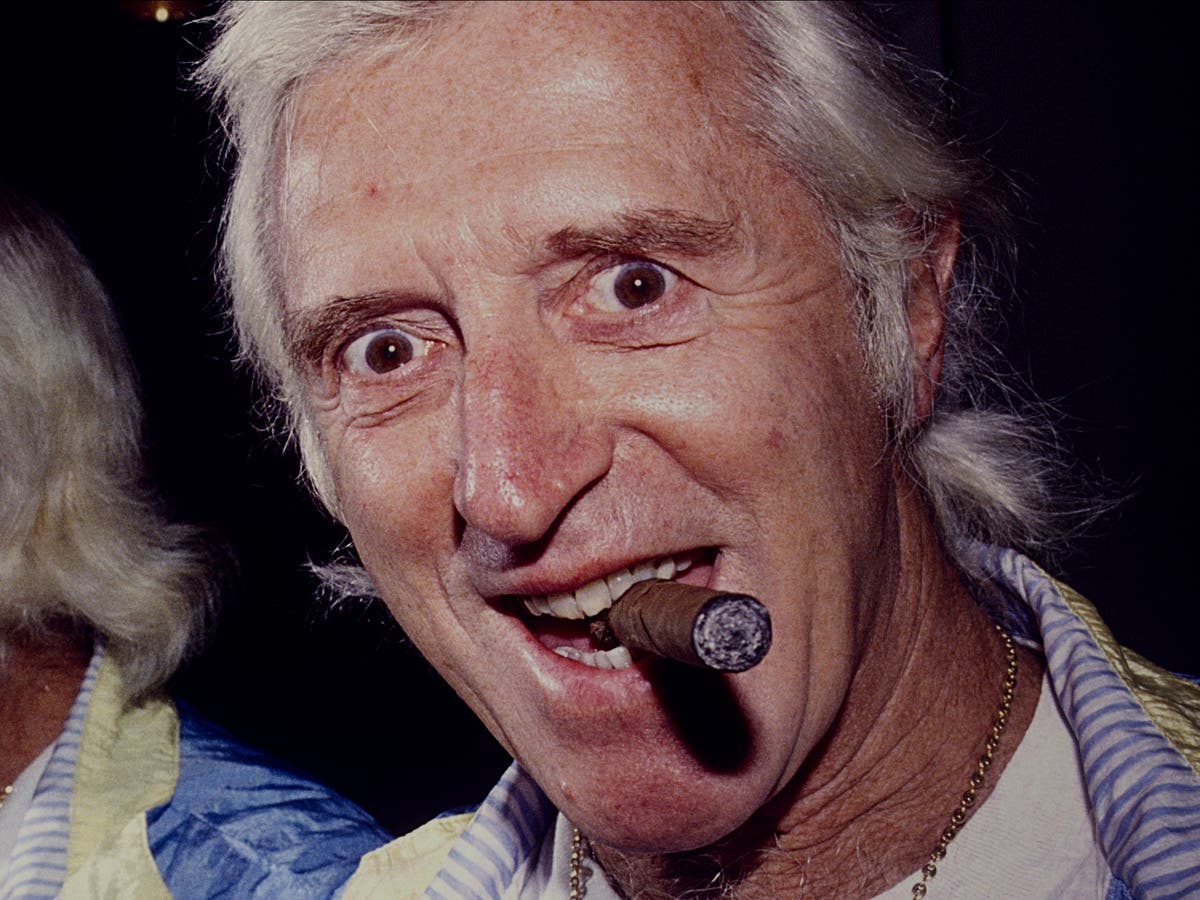It’s no surprise that TV commissioners can’t get enough of Jimmy Savile. Even in the world of true crime, where the most twisted and unfathomable deeds are routinely picked apart with grim fascination, Savile’s case is unlike any other, both in terms of scale and sheer heinousness. The latest project to tackle it is Jimmy Savile: A British Horror Story, a bleak two-part documentary out on Netflix today.
Directed by Rowan Deacon (in a considerable step-up in profile from her previous work, which includes The Case of Sally Challen and The Tube)the series is, on the spectrum of true crime docs, on the more tasteful side. It’s clear that the documentary makers feel the need for a narrative – but how are you supposed to neatly narrativise six decades of rampant abuse in just two and a half hours? The answer is, mostly, to avoid many of the specifics of Savile’s crimes, save for a few cases. Instead, the focus turns to Savile’s own public persona, how he evaded punishment, and, eventually, how he was posthumously exposed.
It’s heavy on the archive clips of Savile himself, but A British Horror Story’s most effective moment comes in the form of really quite devastating testimony from one of his victims, who was assaulted by Savile on multiple occasions when she was still a pre-teen. In this moment, the documentary is restrained and effective, presenting the facts without editorialising, simply giving a victim the chance to speak. It’s a shame, then, that the documentary lapses elsewhere into the same kind of sensationalistic cliches that plague so much of Netflix’s true crime content.
A British Horror Story does acknowledge the complicated and far-reaching circumstances surrounding Savile’s crimes and the cover-up: his consorting with influential politicians and police officers; his aggressive litigiousness; the extent to which his victims were dismissed as simply being part of a wider “groupie culture” that pervaded the music industry in the 1960s and 1970s. But the scope is not wide enough to explore these issues fully. The finger may be pointed at the friends, co-workers and media figures who enabled his behaviour, but they’re never truly interrogated.
A British Horror Story also indulges a few of the gaudier aesthetic tropes of the modern true crime documentary. There are superfluous talking head interviews. Sinister, churning violins underscore parts of the story. A 2009 police interview in which Savile was questioned about his crimes is recreated using voice actors; there’s something unsettling about listening to a (rather uncanny) Savile impressionist read off his real answers with performative flair.
By the end of the documentary, we are left with only sadness and anger; there is obviously no catharsis to be found. Savile’s case raises numerous questions that can’t hope to be answered within the remits of a two-episode documentary – about the nature of evil and the complicity of the British establishment. At times, it simply feels too monstrous to be spun into Netflix entertainment. This isn’t a horror story, but a dismal, incomprehensible tragedy.








More Stories
How to watch Sinead O’Connor’s ‘Nothing Compares’ documentary this weekend
Barbie smashes The Dark Knight’s 15-year-old box office record
Seann William Scott says he was paid only ‘$8,000’ for American Pie